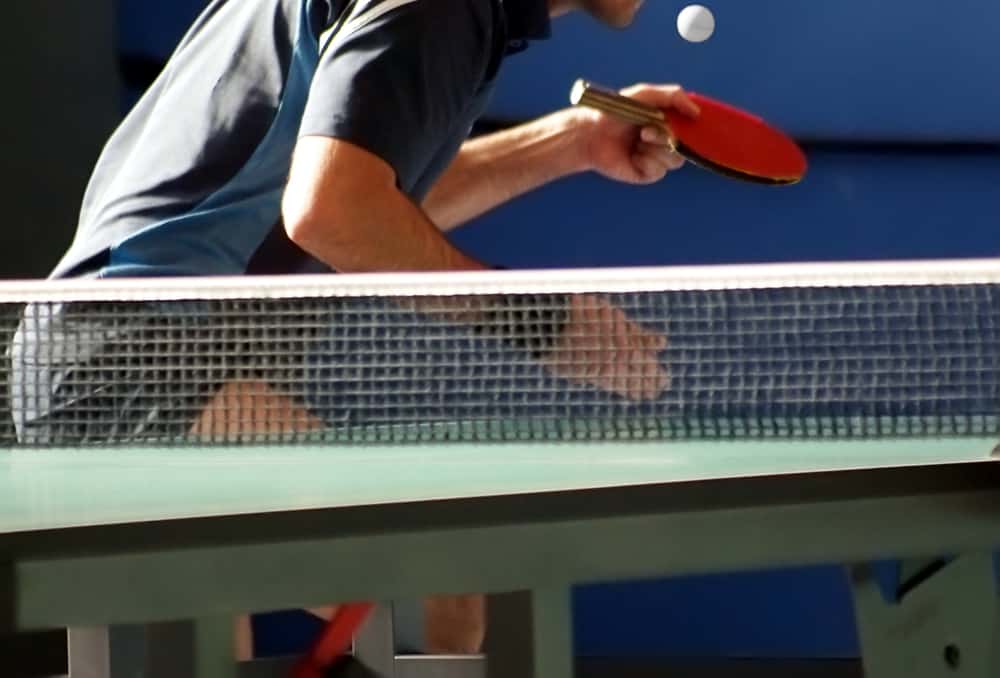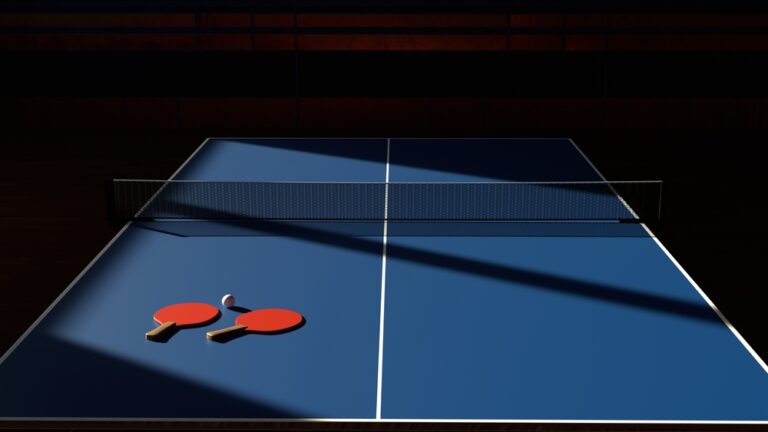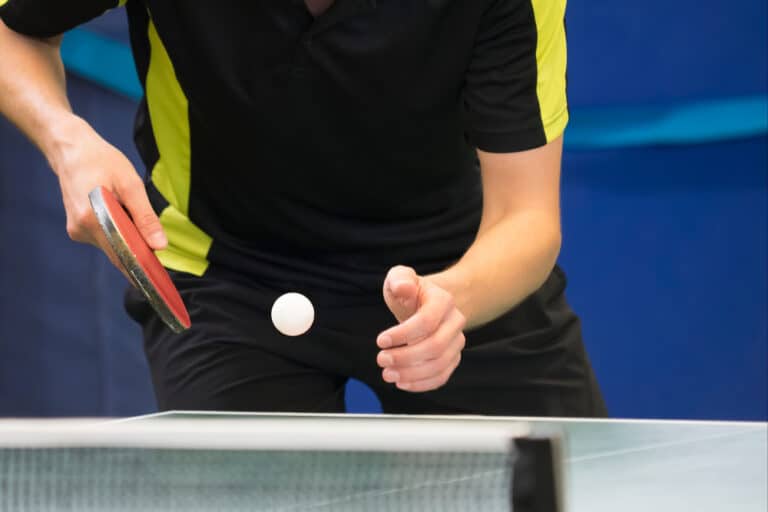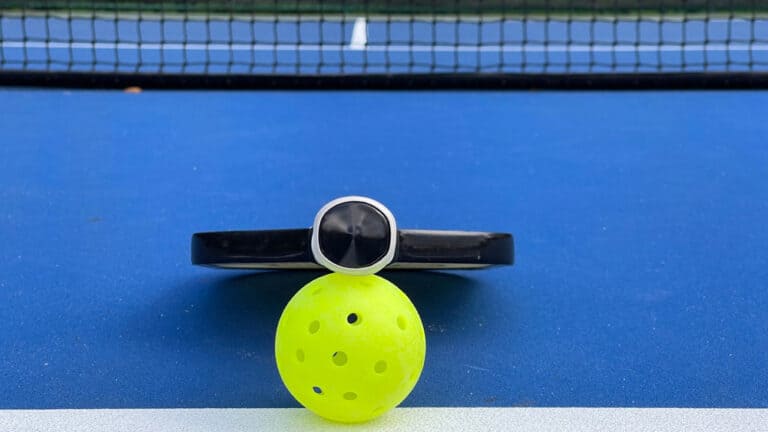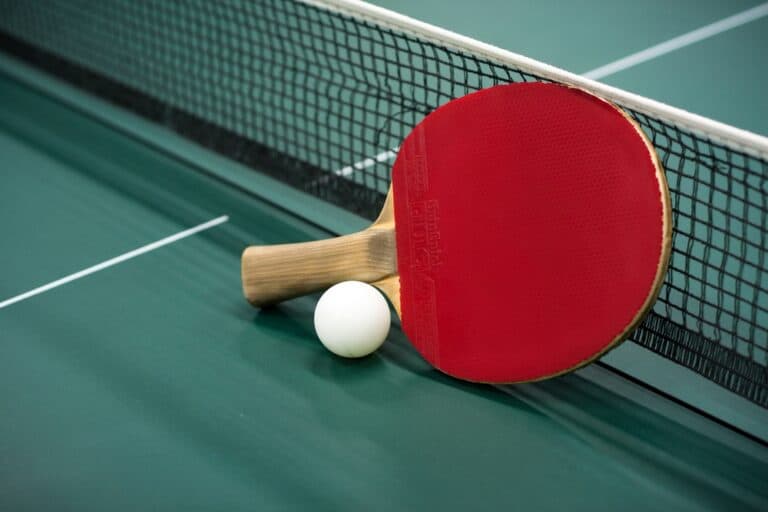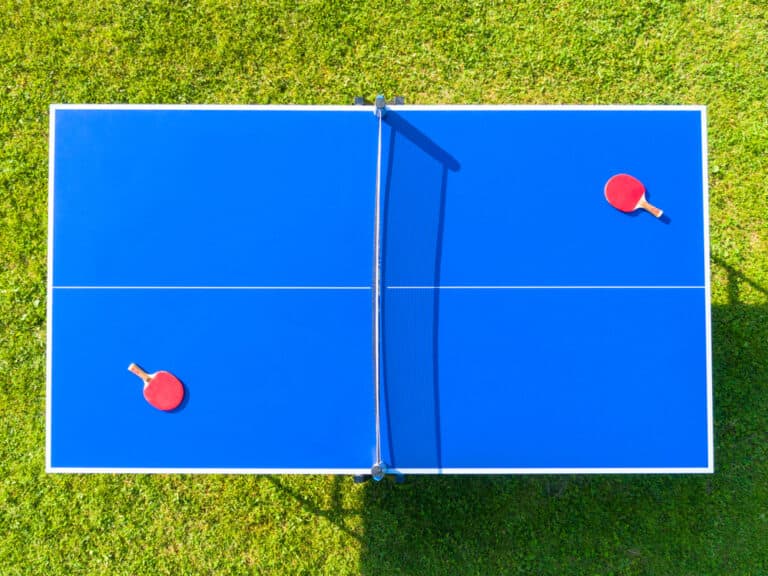How To Return A Tomahawk Serve In Table Tennis
The tomahawk serve’s name derives from throwing a ‘tomahawk’ axe with the top of the object facing upwards and the arm descending in a straight direction. It’s one of the most popular and effective serves as a player can get a lot of spin, speed, and control; however, returning a serve like this is quite challenging.
The Tomahawk serve has many variations meaning a one-type-return-fits-all will not be possible. Still, the simplest way to return the tomahawk serve is by blocking or playing a topspin shot which means striking the ball in an upward motion resulting in the ball spinning towards the opponent.
The tomahawk serve is extremely effective because it has many variations and allows a server to deceive the opponent, creating confusion as to which variation is being played. Therefore, any player returning the ball needs to be aware of the variations and how to approach and respond to each.
What Are The Different Variations Of The Tomahawk, And How Do You Return Them?
The most important aspect to remember when returning the tomahawk serve is to know that no two tomahawk serves are the same. It’s vital to address and understand each type of serve to know how to return appropriately.
Therefore; all players should be aware of the following alterations to the tomahawk serve:
- The tomahawk serves with a topspin
- The tomahawk serves with a backspin
- The tomahawk serves with a sidespin
- The tomahawk serve that is served short
- The tomahawk serve that is served long
- A fast tomahawk serve.
Although it is challenging to see which type of spin the server is playing or how much power they are enforcing, knowing what to look out for when a player is indicating a tomahawk serve is beneficial.
How Do You Return A Tomahawk Serve With Topspin?
A tomahawk topspin serve has a lot of speed and momentum, meaning it’s often played as an offensive medium to long shot, applying a lot of pressure on the opponent.
Firstly, blocking it is one of the most sought-after ways to return a serve like this. Applying force to your stroke will only increase the spin’s effect on the paddle; therefore, you should keep it soft and simple. Furthermore, keep your bat angle closed, meaning it’s facing the table, to keep the return as low as possible over the net, avoiding a ball that spins away.
Secondly, you can return by attacking with a topspin for a more offensive position. Similar to the block, keep your bat angle closed and play low. It’s important not to strike the ball too high as this provides more opportunity for your opponent to play a third offensive shot due to the added ‘air.’ Control the topspin serve by slightly playing over the top of the ball quickly.
How Do You Return A Tomahawk Serve With Backspin?
The tomahawk backspin serve has the opposite effect of the topspin. A backspin serve is usually a lot slower and bounces towards the ceiling when it hits the surface. Depending on the amount of spin, the ball will move upwards when it is served but downwards when it is returned, making your bat position and force of return essential.
Instead of keeping the bat angle closed as you would with a topspin, you slightly keep your paddle angle faced up. It is essential not to create a significant open angle as you don’t want to give the server too much air when they are playing the third shot.
Therefore, ensure you don’t play with too much force and keep the return low and short.
How Do You Return A Tomahawk Serve With Sidespin?
Tomahawk sidespin refers to hitting the ball with the paddle starting at the back and moving towards the inside as if you were moving around it. Sidespin serves to cause the ball to spin towards the inside from the outside when it makes contact with the surface.
The sidespin serve can prove to be a challenging return, especially if you misjudge the amount of spin and accidentally place yourself in an unwanted position resulting in an awkward strike when the ball spins inwards.
The most crucial method of returning a sidespin serve is to accurately recognize and predict it as you need to place yourself in an advantageous position for an adequate return. Once you are in a great position, use a topspin stroke and try placing the ball in the center of the table, as this will avoid a faulty return if you misjudge how heavy the spin is.
Moreover, keep your bat angle closed to play just over the net and try moving the paddle slightly over the ball to create some topspin, as it will provide you with more control over the ball’s direction and apply more pressure on the opponent.
How To Return A Tomahawk Serve That Is Served Short?
The goal of a short tomahawk serve is to inhibit the opponent from playing an offensive return. Commonly, the server wants to force the opponent to play a return that does not force them to rush or attack the third shot in the game.
Once again, placing yourself in an advantageous position, specifically with your footwork and stance, is vital as you need to move quickly to the table with control and balance. Regarding the return, you can decide whether you want to put immediate pressure on the opponent or start the game gradually.
If you want to apply pressure immediately, you can push the ball with speed and force, resulting in a long shot that will force your opponent to move with haste after their serve. Some players also flick their paddles on a short serve to create momentum and speed, but you should be wary of spins, as a flick can also cause the ball to move away from the table.
For a more gradual start to gain an ideal position, you can return the ball soft and low, so it will bounce more than once on the surface, making it challenging for the opponent to attack. You can choose the most appropriate response depending on the server’s position.
How To Return A Tomahawk Serve That Is Served Long?
Commonly, tomahawk serves are short and have heavy spin, but players can choose an alternative variation that’s long and straight to catch the opponent off guard. The goal of a long serve is to put immediate pressure on the opponent and force them away from the center of the table.
The best way to respond to a long serve is to go on the offensive. If you see that the server intends to add power and speed to the serve, and if they are not deliberately trying to deceive you, take a few steps back to provide space between yourself and the end of the table.
Longer serves usually bounce once at the end of the table and move towards the corner; therefore, you need to provide space and time to loop the return effectively. Keep your racquet angle faced toward the table with a relaxed hand, and try looping the ball when it’s at its highest after the bounce for maximum control and power.
How Do You Return A Fast Tomahawk Serve?
Fast serves must be countered by focusing on ball placement instead of spin or speed. Often the opponent makes a mistake by simply pushing the ball, which causes it to hit the net due to fast serves still having a certain amount of spin. Rather than pushing a fast serve, you should drive the ball in a specific direction which will be uncomfortable for the server.
A “drive” refers to the minimal action of moving the paddle from your side to the middle of your body with speed and precision but without using too much energy and motion like the loop. Your paddle should still angle towards the table due to the spin, and your foot placement should be comfortable, providing you with balance and opportunity for movement between them.
Depending on the position and weakness of your opponent, you can choose the ideal return. If the server is in the backhand stance, or if it’s their dominant position, drive to the backhand; similarly, you should drive to their backhand if they have a dominant forehand.
Playing to the backhand and forehand is ideal if the server is a bit further from the table, but drive towards the elbows when they are near the table as it will result in an awkward short trying to twist the wrist to reach the ball.
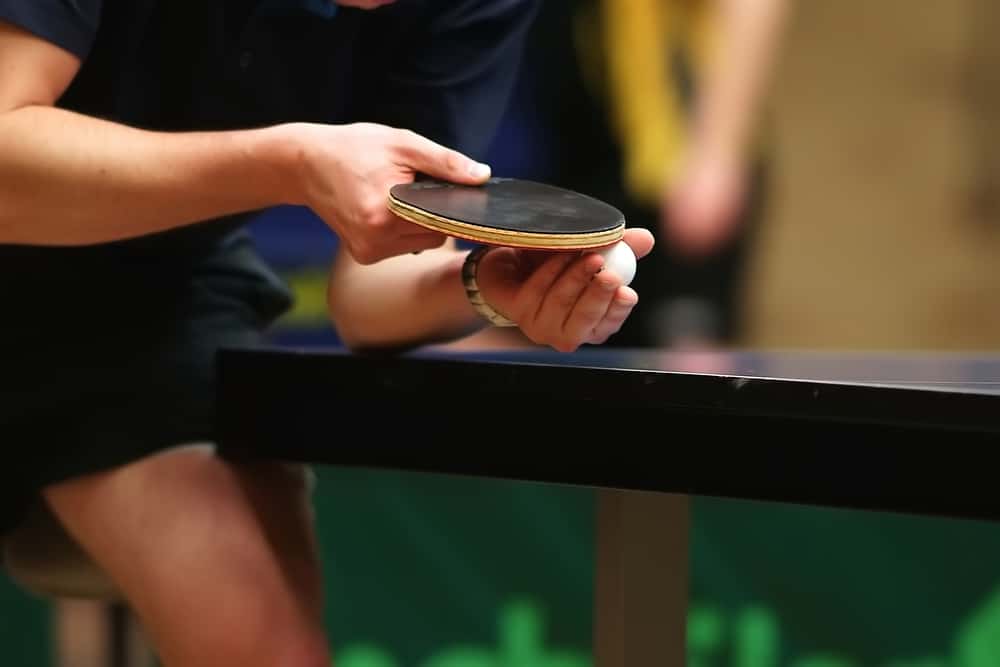
What Makes The Tomahawk An Especially Difficult Serve To Return?
Due to the tomahawk serve providing various options a player can use, it’s often difficult to deduce which ‘type’ of tomahawk serve a player will use as they will also intentionally deceive you into assuming the wrong one.
More advanced players have mastered a specific motion where they start the serve at the top right side of the ball and quickly move their wrist around the side, finishing the sweeping motion with the paddle underneath the ball. The motion is advantageous as the server can easily choose and control different spin variations as well as the amount of power.
Moreover, throwing the ball high in the air gives the server more time to apply deception to a serve creating confusion for the opponent, and it also provides more speed and spin as the ball descends to the paddle with more power.
With advanced motions like these, it’s challenging to read what type of spin variation will be used as well as the amount of spin and speed the ball will have. Commonly, players will be unable to return the ball or return it poorly, giving the server a dominant position in the third shot.
Most professional players keep the ball short and serve to the opponent’s forehand with a lot of side- and topspin. A heavy topspin serve at the forehand makes the ball difficult to return as it forces your wrist into an awkward position that’s unable to control direction and balance.
In addition, players who return the ball by simply striking it powerfully with the forehand will find it shoots away from the table because of the topspin.
To effectively return advance tomahawk serves, you should be able to anticipate what your opponent is planning on doing as this is half of the race already won.
Anticipating the serve is easier said than done. Still, suppose you can anticipate the motions of the server. In that case, you’ll be able to return to their weak side, forcing them to move unexpectedly as the tomahawk position is not always ideal for moving quickly.
What Are Some Common Tomahawk Traps, And How Do You Return Them?
The tomahawk serve is mainly used to gain a point immediately at the serve; as a result, servers will often try to bait you into playing a return that you assumed was going to be a short serve but then turned out to be a long serve, and vice versa.
A common trap is when a server plays short serves with different spins to make the opponent comfortable with the idea of using the forehand only to entice it when they are serving a long backhand spin. Playing a forehand loop to a backspin will result in a downward spin to the net.
Therefore, be on the lookout for any signs that your opponent is changing the angle and formation of the bat to play a backspin. The tomahawk enables servers to change at the very last minute making a deduction challenging, but it’s still possible to spot the differences.
Another common trap is a quick and flat tomahawk serve in the table’s center. Servers want to force the opponent into an awkward position where they either play a drive or block shot so the server can play a third offensive shot in the corners.
Ideally, you want to loop these types of serves into an uncomfortable position for the server; therefore, ensure that your stance is balanced and stable to have the ability to change it quickly.
Conclusion
The tomahawk serve is one of the most difficult serves to return, especially if the server deceived you into inaccurately judging the spin and speed. Although all the types of tomahawk variations can be returned, players often make the wrong judgment call; therefore, practice returning all the variations and study your opponent to deduce when they are bluffing and deceiving.

